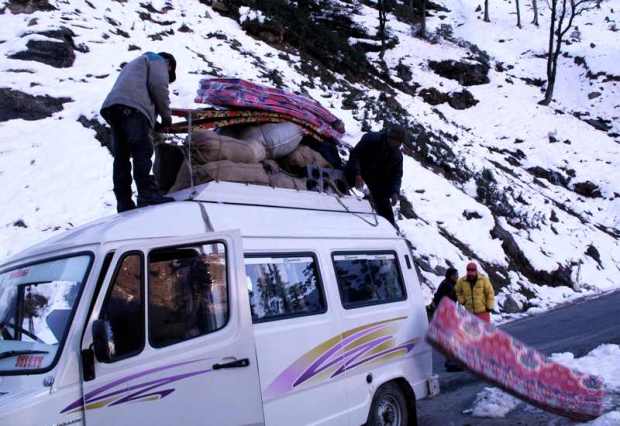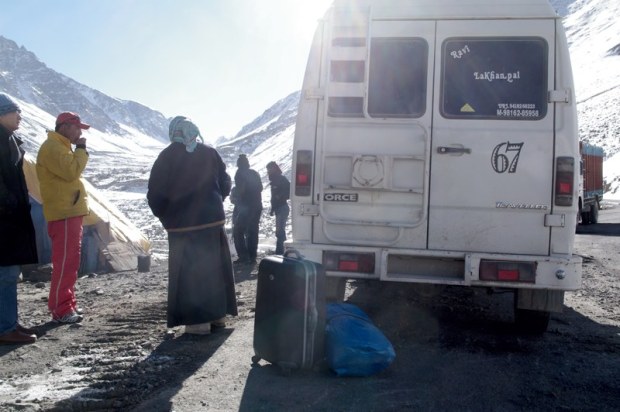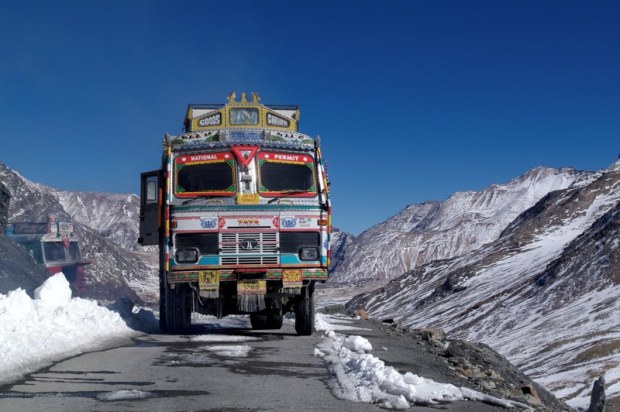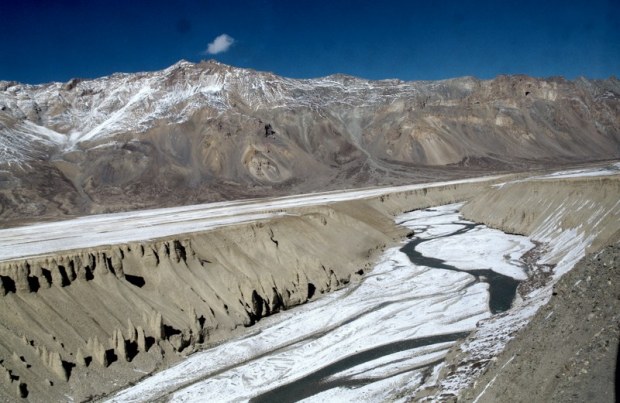
Viewpoints : coming in to Leh in late October I was surprised , after the descriptions of the “flattened” Leh , to see the entrance gate standing. The path of destruction below the gate is impressive. Standing above it it´s nearly impossible to find any clues of what happened after the cloudburst on August 6th. The old town centre , where people woke up in amazement when the rains hit… and went back to sleep ,unaware of what happened in Maney Tselding , is virtually untouched. Walking around the royal palace the only possiblle traces I could find was a stretch of the paving laid out by the Tibet Heritage Fund damaged , and some broken steps leading to the court of the gompa below the palace. There was talk of a damaged wall in the palace , but I never manged to find it.The Hill Council had posted a map showing a secondary mud flow across the polo ground above the bazaar street , giving me concerns for the people I used to stay with on my first visits to Leh. Again , no traces left by this time.
Walking up from the market to my Changspa guest house presented familiar views. The Changspa bridge was torn down in the 2006 rains , and this time it held. The banksof the stream have been undermined in a few places , and were being reinforcedduring my stay until it became too cold for cement to cure : this should be finished by next spring.

Walking down below entance gate area became a reversal of my work role , starting in some ways to act as the next of kin : I knew it would feel better afterwards , but still hesitated. Present situation : the bus station area was cleared long ago , at the southern edge you can still see a line of houses which just has been clerared – this is where rocks and cars were tossed in by the mud flow.Higher up you find a line of stalls replacing the old shops. The Maney Tselding residents has been given new plots far away from any possible future floods , but this also place them far away from any possible trade , so the tented stalls will probably become a permanent situation – the Hill Council has banned construction in the area.

Maney Tselding was where the mudflow path started to hit in Leh. Further down it struck the Sonam Norbu Hospital , the BSNL telecomminication centre , and the aiport. In the beginning it hit a mani wall that literally got it´s last block of reconstruction in November.


In the media presentation Maney Tselding became the representation of what happened in Leh , the camera eye rarely moved from there – see for example this news spot , which actually is a little better than many since it includes (without commenting ) the untouched bazaar street. The common factor is the incredible amount of pictures and video from within a one or two block radius : pictures of this single house , like this from Nana Ziesche ( yes , thats´s a car in the foreground ) got a huge coverage at the time.

This coverage , concentrating on striking imagery ( including the excavation of bodies ) is a a sore subject today with many Ladakhis , at times getting close to anger. It also gives little chance for understanding even for people who have been to Ladakh : there were for example forum discussions saying on one hand that of course mud brick buildings had no chance to withstand events like this ,and on the other hand some pointing out pictures like this where traditional buildings had survived next to crushed modern , reinforced concrete buildings. Both views are fundamentally flawed in my opinion : there are practically no buildings that have a chance to withstand forces that toss buses trees and rocks the size of small cars . The only possible protection is understanding where you won´t come in the way of these forces , which is a form of knowledge linked to traditional building in Ladakh.

Today the building in the previous picture has been cut down to the intact parts : the foremost room is the storage room for a glass workshop , the guest house behind is not working yet but in the same block the carpenter shop is up and running. The Google Earth view , based on imagery from October shows the boundaries of this media landscape – which is also where all my pictures in this post come from.

(Bus station to the left , the house in picture # 6 just where the roads turns right , entrance gate at the top of the picture. )
This the Leh-only report : obviously this leaves out what happened in Choglamsar and many other places in Ladakh . It also shows the last remaining tents in central Leh, also shown in the Google Earth picture. Most of the emergency tent camps closed already in September , the housing efforts will be covered in a later post.














